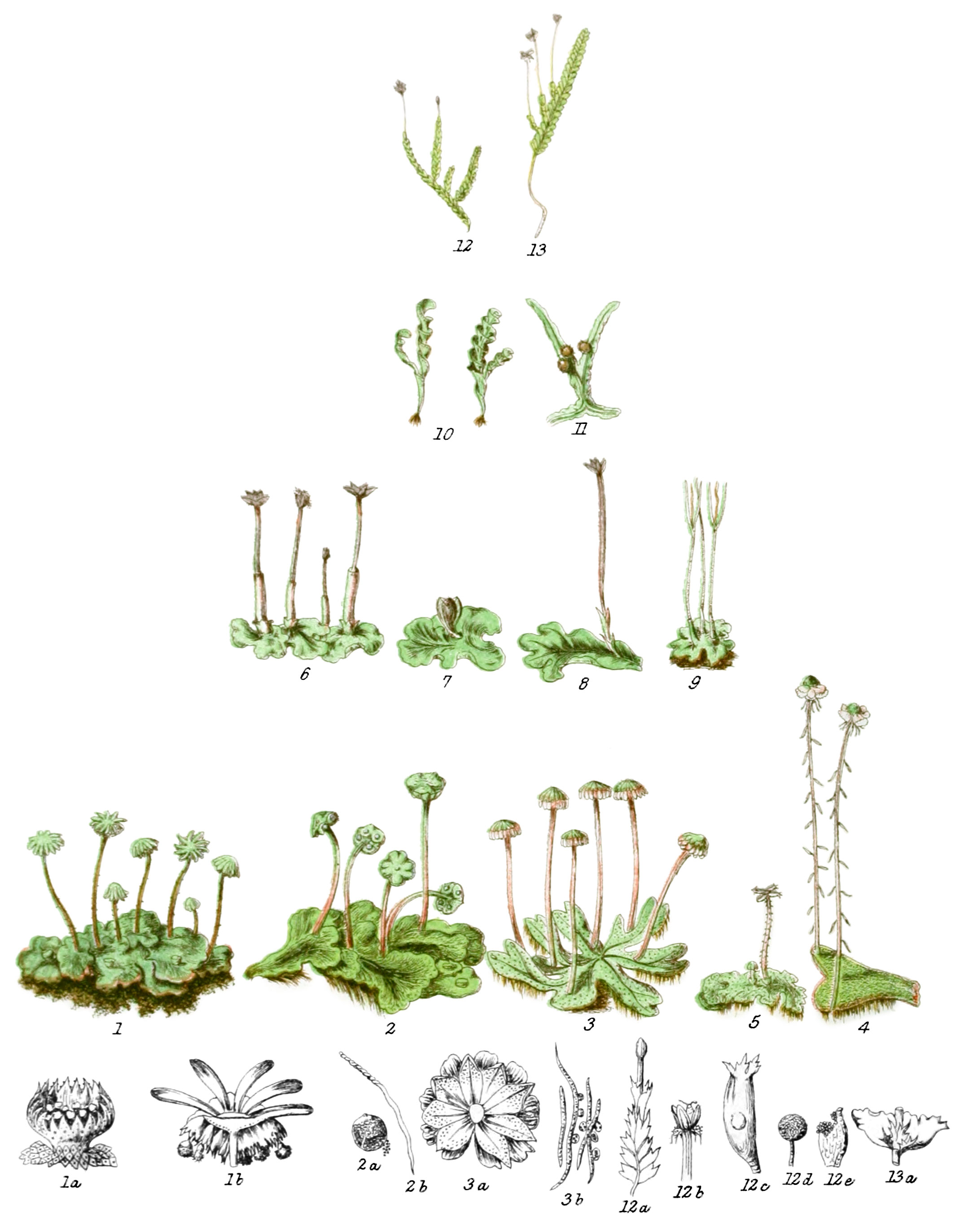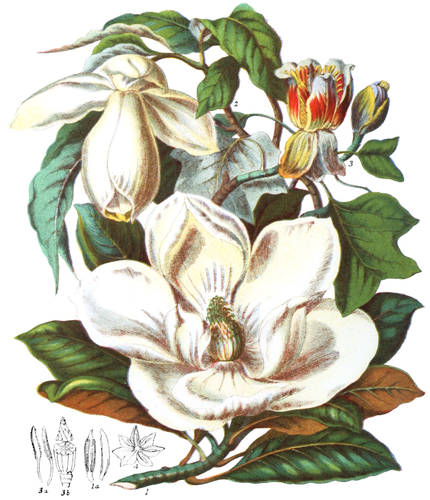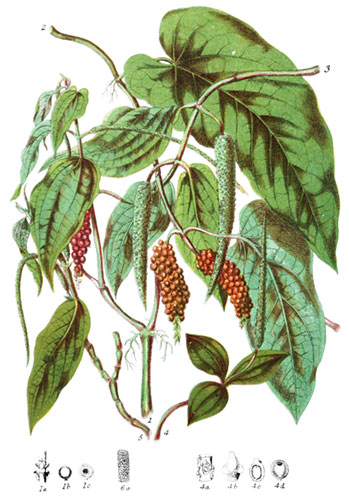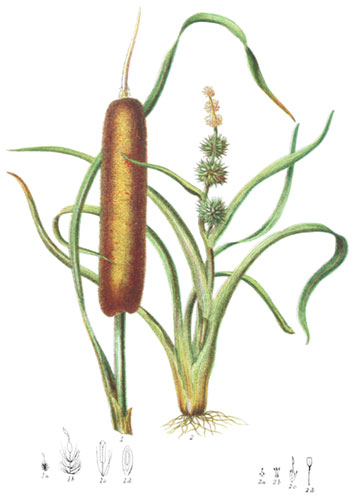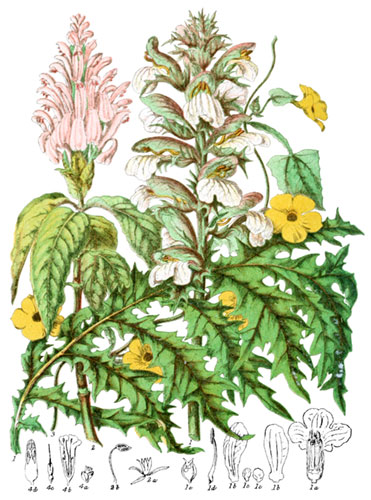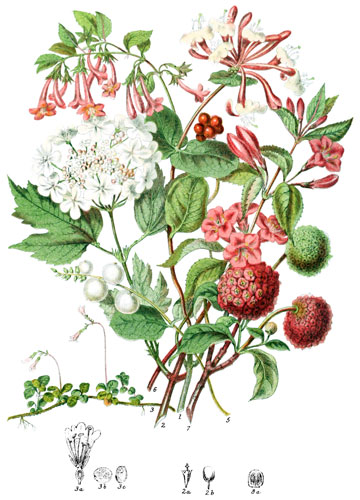Key characteristics
Creeping herbaceous plants, of cellular tissue, with leaves and axis combined in a leafy expansion or frond, having pores on the upper surface, emitting rootlets from the lower surface; sometimes having separate leaves surrounding a central axis. The fructification is of two kinds, spore-cases elevated on a stalk, or cups springing out of the inner layer of the frond containing small bodies capable of producing new plants. In the disk of the stalked spore-case are oval bodies enclosing filaments rolled up in the cells. The radiated disk has spore-cases on its under surface full of spores and spiral elaters, which by their elastic force scatter the spores. The spore-cases open by irregular fissures, or separate teeth or valves, and are either with or without a central column. The spores are globose, mixed with spiral elaters. Riccia and others have no elaters.
This Tribe is connected with Mosses by Jungermannia, but is distinguished by having no operculum to the spore-case. Riccia forms a link with Lichens. A few of these plants have a slight fragrance and subacrid taste.
Select plants in this order
Not all plants listed are illustrated and not all plants illustrated are listed.
- Marchantia, chosen for the type of this Order, was named after one of the first members of the Académie des Sciences, in Paris, in 1666. It is a genus of soft creeping plants, with green fronds, usually growing on wet rocks or ground, or on the margins of wells. The frond has no mid-rib, but is intersected with fine lines forming lozenges, in each of which is a pore or stomate like those of flowering plants.
- M. polymorpha (1) is frequent on stones in damp shady courts, but grows most luxuriantly on wet rocks in Scotland. The stalked spore-cases appear to require the full light of the sun for development; in the shade and small cups imbedded in the frond are more plentiful. These contain cells of spores which becomes detached and produce new plants. The fronds also have the power of increasing by adding new portions, which afterwards separate and grow into fresh plants.
- M. hemisphærica (2) grows in similar situations, preferring moist rocks or ground, clinging by the fine rootlets, and absorbing moisture by the numerous pores of the fronds.
- M. assamica (3) is an example of the tribe from the sores of the Burrampootur and Koondil, where it was found and described by the late diligent botanist, William Griffith.
- The genus named Rebouila differs but little from Marchantia, chiefly distinguished by the disk of the spore-cases not being deeply lobed.
- R. graminosa (4) grows on shady banks at Otipore in Bengal, mingled with other plants of like nature.
- Lunularia (5) has a spore-case opening into four or eight valves at the top of a hairy stalk. In the park of Chantilly this little liverwort may be seen in perfection on the stones in the small rivulets which traverse the grounds.
- Another genus, combining a four-valved spore-case with a flat frond, is Aneura (6).
- Targionia (7) records the name of a Florentine who introduced botanical lectures in the course of instruction prepared for medical a slight rib.
- Pellia epiphylla (8) has a four-valved spore-case on a stalk proceeding from the mid-rib.
- Anthoceros (9) is known by the horn-like shape of the slender spore-case, which splits into two parts from the central column, leaving spores and elaters to escape.
- A. punctatus and other species are natives of England.
- An exceedingly elegant little plant has lately been discovered in Algeria, and described by M. Montagne in the flora of that country. Duriæa helicophylla (10), with its narrow frond, of a bright green colour, twisted in a spiral manner, presents a very remarkable appearance; its erect growth also contrasts with the prostrate, creeping nature usual in this tribe. The fructification consists of spores on minute bract-shaped bodies attached to the central column.
- Riccia (11) was so called in memory of a Florentine botanist, in whose time the structure of these little plants was not so accurately known as at present. The spore-case rests on the frond enclosed in a two-valved sheath.
- Ruppius selected the various species of Jungermannia to record a German botanist born in 1572, who spend a long life in exploring the vegetation of his own country and of Switzerland. In form and manner of growth they are closely allied to Mosses.
- J. bidentata (12) may be found in moist places bearing fructification in the autumn. All the British species have alternate distinct leaves, two in New Zealand have leaves opposite and united. Some have stipules on the under side between each pair of leaves, either entire or toothed. The so-called anther is a round pellucid membrane full of a fluid with granules, which escape at an irregular opening. The spore-cases are on slender stalks, and burst at the top when ripe into four valves, the spores being expelled by the elastic spiral filaments.
- J. gigantea of New Zealand is the largest known species.
Locations
This Tribe is scattered in all countries, very abundant in the Tropics, as well as in Europe, wherever there are shade and moisture. Several European species belong also to N. America, Brazil, and the Cape. Two species have been found in Melville Isle.
Legend
- Marchantia polymorpha. Wet places, Britain.
- Cup.
- Spore-cases.
- M. hemisphærica. Britain.
- Spore-case.
- Elater.
- Marchantia assamcica. Shores, Assam.
- Spore-cases.
- Spores and Elaters.
- Rebouilia graminosa. East Indies.
- Lunularia vulgaris. France.
- Aveura proceros. France.
- Targionia hypophylla. England.
- Pellia epiphylla. England.
- Anthoceros lævis. France.
- Duriæa helicophylla. Algeria.
- Riccia nudichotomoa. France.
- Jungermannia bidentata. England.
- Spore-case and leaves.
- Spore-case.
- Sheath of Spore-case.
- Globule.
- Spore-case.
- Jungermannia sinuosa. Dusky Bay, N. Zealand.
- Leaves and Stipules.
Explore more
Posters
Decorate your walls with colorful detailed posters based on Elizabeth Twining’s beautiful two-volume set from 1868.
Puzzles
Challenge yourself or someone else to assemble a puzzle of all 160 botanical illustrations.
